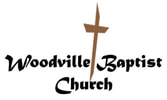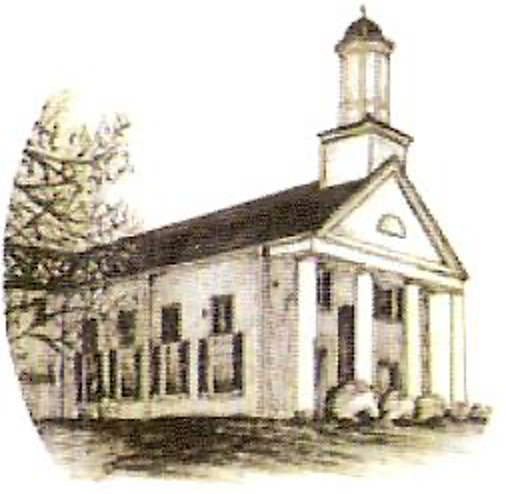A Brief History of a Long Heritage: Woodville Baptist Church: 1798-2000
Life in America in 1780 was uncertain at best. It was a time when our country was still an infant, when it was unsure whether or not she would remain an independent country. It was a time when there was still the real threat of attack externally from the English or the Spanish, or internally from people like the Tories who supported English rule in America. It was also the time when God chose to take His gospel to a new land. In 1780, the families of Richard Curtis, Sr. and Daniel Ogden and the Perkins family, left their homes in South Carolina traveled to a very primitive area of the Natchez country along the Mississippi River. They were probably accompanied by James Cole, one of the first settlers of the Mississippi Valley. After arriving and building their houses, the families met for worship. They called Richard Curtis, Jr., already a licensed preacher, to be their pastor. The community these people built was later called Salem and was the first Protestant community formed in the area.
As time passed, William Ogden, brother of Daniel Ogden, moved with his wife to Fort Adams. There they met David Jones, a Baptist who had been living in the area for several years under the Spanish Government. They sought help from the church in Salem and in 1798 “The Baptist Church on Buffalo” was constituted as an arm of the church in Salem. In 1800, another church was constituted four miles southwest of what would become Woodville. It was established on Bayou Sara Creek by a part of the Ogden family and others. According to W.E. Paxton, this church “refers to the same organization which continued to meet as an arm of the Salem church until this date, when it assumed an independent existence, and was thence-forward known as Bethel church….” (A History of the Baptists of Louisiana from the Earliest Times to the Present, Rev. W.E. Paxton, 1888, p.33)
As these churches became established, they recognized a need to join together in fellowship. In 1806, the churches of Salem, Bethel, New Hope, New Providence and Ebenezer met on Cole’s Creek to organize the Mississippi Baptist Association. This association would be the first of three associations that Bethel Church was to be influential in establishing. Later, in 1843, the church would join other churches along the river to form the Mississippi River Baptist Association. In 1853, the church returned to the Mississippi Association. In 1885, Carey Baptist Association was birthed from several churches in the western region of Mississippi Association. The “Woodville---Bethel” Baptist Church was one of its charter members. She later once again returned to the Mississippi Association.
The year 1853 was a significant year in the life of the church. Not only did she re-enter Mississippi Association, but she also moved to Woodville. “There had once been a Baptist Church in this place and one in the neighbourhood both of which had been affected more or less with the leaven of Campbellism and the one in Town had long ceased to exist though the old house of worship still stood it was so debilitated as not to be used for any purpose. (sic)” (from the minutes of Bethel Baptist Church, September 6, 1853) It was also in this year that there is the first mention of “Sabbath School” being held.
The growth of the church was erratic. In 1854, total membership of Bethel stood at twenty-four, eighteen of which were white and six were colored. In 1856, the membership had jumped to forty-seven, twenty-one white and twenty-six colored. In 1870, there were twenty-nine members. In 1882, the membership was down to nine members. The church minutes state the situation at that time: “there had been no preaching in the church for several years, and on account of the removal of some of the members and back sliding in others the old Woodville Bethel Church became practically disorganized.” The struggles of the nineteenth century apparently laid a strong foundation for growth in the twentieth. In 1920, the membership was only 23, but since that time it has steadily progressed.
As in every church, Bethel was not without her conflicts. One conflict was with the Campbellites who would later form the Christian Church. In 1857, the Campbellites asked to share the use of the Baptist Meeting House. The request was rejected. Also, a Brother McReady was charged with communing with the Campbellites. He confessed and pleaded an error in judgment, asking forgiveness for his sin. He was forgiven by the church and the case was dismissed.
There are several recorded conflicts with members who were not behaving correctly and church discipline was executed. In March of 1856, a Brother Jerry Miller was charged with “Blasphlemous Language, and Hunting on Sunday (sic).” On April 20, the church excluded Mr. Miller from its body. In a November 3, 1860 meeting, Sisters Viola and Elizabeth Montgomery were found guilty of dancing. They said that they were sorry for this doing and asked forgiveness of the church. The church, believing the girls, forgave them.
The church building was built in 1809 and called the Baptist Meeting House, although for many years other churches apparently used it too. Throughout the early years, this building was in a state of use and disuse. When Bethel moved the church to Woodville, 1853, the church found the building “so debilitated as not to be used for any purpose.” (WBC Minutes, September 1853) The building was apparently reoccupied in January 1855. A note in the minutes indicates that there were “no services held in Church from Oct. 1887 untill (sic) May 1892”. (WBC Minutes, May, 1892) In minutes no longer available, it is recorded that “tragedy struck at the church” and the old brick building was “condemned and pronounced unsafe for large gatherings of people.” (The Journal of Wilkinson County History, S. Pitts, p. 260) The Woodville Republican reported in the August 20, 1898 edition that there had been a “report that the Baptist building was unsafe.” But on January 29, 1899, the paper stated that services would be held on January 29, so apparently the building was inhabited briefly. During 1900, however, services were moved to the Presbyterian Church and continued there until 1914.
The Woodville Republican reported on August 22, 1914, “the Baptist church is now being thoroughly renovated and repaired and will be ready for use within a couple of weeks.” The building was again renovated in 1935, when, according to the Republican, “the concrete had been reinforced and the entire outside has received a new coat of paint. The interior was done over during the past year so the whole church presents a most attractive and ___appearance.” A sub-story was begun in 1938 and Rev. T.J. DeLaughter and his wife used this area for living quarters. A new parsonage next to the church was built in 1945, first occupied by Dr. and Mrs. B.B. Hall. Later, in 1994, the church purchased the Clifford Wheeler home for a parsonage, the former parsonage now being used by the Minister of Youth. A major addition to the church was added in 1950, when a three-story education building was added to the rear of the main building. Work has also been done to the fellowship hall on the first floor. It has been remodeled twice, once in 1979 and again in 2000. In 1992, the sanctuary was totally renovated, including removal of an arch over the choir loft, remodeling the pulpit and choir area, installing new carpet, pews, lights and sound system.
Over the years, the church has ministered in various ways. In her earliest years, preaching and revival services were the primary ministries of the church. Then, in 1853, “Sabbath School” for children began on an irregular basis. In 1911, a ten-year-old girl (the late Janie Ford) and Rev. T.R. Paden and two others began a Sunday School “back in the old brick building.” Apparently, at a time when the old church building was still condemned for large crowds and unused for worship, Sunday School was being held there. The Sunday School has been a continuous ministry of the church since 1911. Vacation Bible School has been an integral ministry of the church since 1937. Ministry to children and youth began with the efforts of concerned lay people who sponsored fellowships and picnics and the ministry continues today with egg hunts, special trips, fifth quarter fellowships, and youth worship services. In 1921, Training Union organized effectively and continues today under the new name of Discipleship Training. Music has always been a vital part of worship and choirs for all ages worship the Lord through song. In recent years, some men have begun ministries to the inmates in both local correctional facilities. Other members recognized a need to take the gospel to African American children and began to work with New Life Baptist Church in a weekly children’s ministry.
Missions and missions education have always been strong at Woodville Baptist Church. The state’s first Ladies’ Mission Society began at Bethel. In 1824, Dr. David Cooper was asked by these ladies to take an offering of $35.56 to the Mississippi Baptist Convention being held that year at Bogue Chitto Baptist Church. This became what is today called Woman’s Missionary Union. The WMU record of 1918 reported a very active year for the church’s WMU, an activity that has continued to this day. Missions education for all ages has been available for years. During one of the ladies meetings, education turned to action. The study concerned resort missions and the ladies began discussing a need for a ministry to people enjoying recreation in the Fort Adams/Lake Mary area. In November 1980, the first service was held. Thus was the beginning of Fort Adams Baptist Mission. In 1999, this mission built a permanent building and became a fully constituted, autonomous Southern Baptist church.
Woodville Baptist Church will continue to build upon the foundation laid by those who have come before. The fields are still ripe for harvest and there is still much work to be done. As we look back, we see the dedication of many souls who loved their Lord and served Him well. They are now a part of the “great cloud of witnesses” (Hebrews 12:1) that watches us. May our labors be as faithful and as enduring as theirs and may they be proud of the way we carry on the work!
(Many thanks to Bruce Lewis, Lee & Linda Gene Carter, and the late Rev. O. B. Beverly for their tireless work in researching and compiling historical information that made this brief history possible.)

